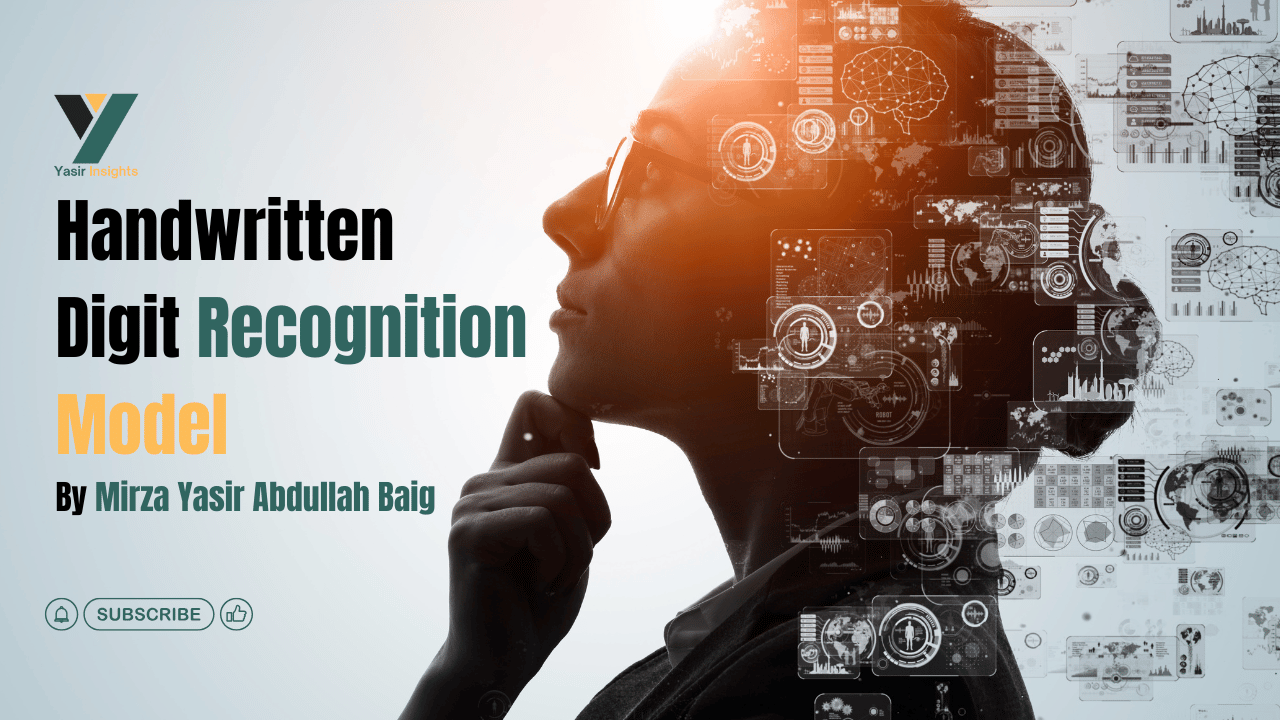
Client:
AvailableProduction:
Yasir InsightsDate:
January 27, 2025Category:
Website DevelopmentLocation:
Sargodha, PunjabProject Details
The Handwritten Digit Recognition Model is an end-to-end deep learning project built to classify handwritten digits (0–9) using the MNIST dataset. This project explores the intersection of computer vision, neural networks, and image processing, enabling systems to automatically recognize digits from user input. The model was developed using TensorFlow/Keras and integrated into a Streamlit web application, where users can either draw digits interactively or upload images for real-time predictions.
The workflow began with data preprocessing, where MNIST images were normalized, reshaped into 28×28×1 tensors, and one-hot encoded for multi-class classification. A Convolutional Neural Network (CNN) was designed with two convolutional and pooling layers, followed by dense and softmax layers for output classification. The model was trained using the Adam optimizer and categorical crossentropy loss, achieving around 99% accuracy on test data — demonstrating strong generalization and minimal overfitting.
To make the model interactive, it was deployed using Streamlit, providing a simple yet engaging interface. Users can draw digits directly on a digital canvas or upload their own images, and the model instantly predicts the corresponding digit while displaying a confidence score and probability chart. The app also includes a personalized sidebar featuring the author’s professional links (LinkedIn, GitHub, Kaggle), making it a complete showcase of technical and design integration in AI applications.
This project provided hands-on experience in deep learning architecture design, image preprocessing, model evaluation, and real-time deployment. It strengthened understanding of how CNNs extract hierarchical visual features — from simple strokes to complete shapes — and how models can be operationalized through intuitive interfaces. Overall, this project reflects practical skills in AI engineering, model deployment, and user experience design, making it an ideal addition to any data science or machine learning portfolio.

Built a Handwritten Digit Recognition Model using CNNs and the MNIST dataset to classify digits (0–9) with ~99% accuracy. Developed and trained the model in TensorFlow/Keras, and deployed it via Streamlit for real-time predictions. Showcases complete AI workflow — from data preprocessing to interactive deployment.

Created a deep learning app that recognizes handwritten digits using Convolutional Neural Networks. Trained on the MNIST dataset, achieving about 99% accuracy on test images. Deployed with Streamlit, allowing users to draw or upload digits for instant recognition.



The project began with a clear strategy focused on understanding the problem, defining objectives, and selecting the right tools and datasets. The main goal was to develop an accurate and efficient handwritten digit recognition system using deep learning. A detailed plan was created outlining each stage — from dataset selection and preprocessing to model design and deployment — ensuring a structured, goal-oriented workflow.
In this phase, the MNIST dataset was preprocessed, normalized, and reshaped for compatibility with CNN models. A Convolutional Neural Network was designed and trained using TensorFlow/Keras, leveraging convolutional, pooling, and dense layers for feature extraction and classification. The model was then integrated into a Streamlit web application, enabling users to draw or upload digits for real-time predictions.
After training, the model’s performance was analyzed using metrics such as accuracy, loss curves, and confusion matrix. The CNN achieved around 99% accuracy on test data, with minimal overfitting and strong generalization across all digit classes. Visual analyses helped interpret how the model learned patterns — from simple edges and strokes to complete digit structures.
The final stage involved compiling results, visualizations, and insights into a clear and professional report. Training graphs, confusion matrices, and prediction outputs were documented to showcase model performance. The Streamlit app was deployed as a live demo, and all code, model files, and documentation were uploaded to GitHub — ensuring full project transparency, reproducibility, and professional presentation.
